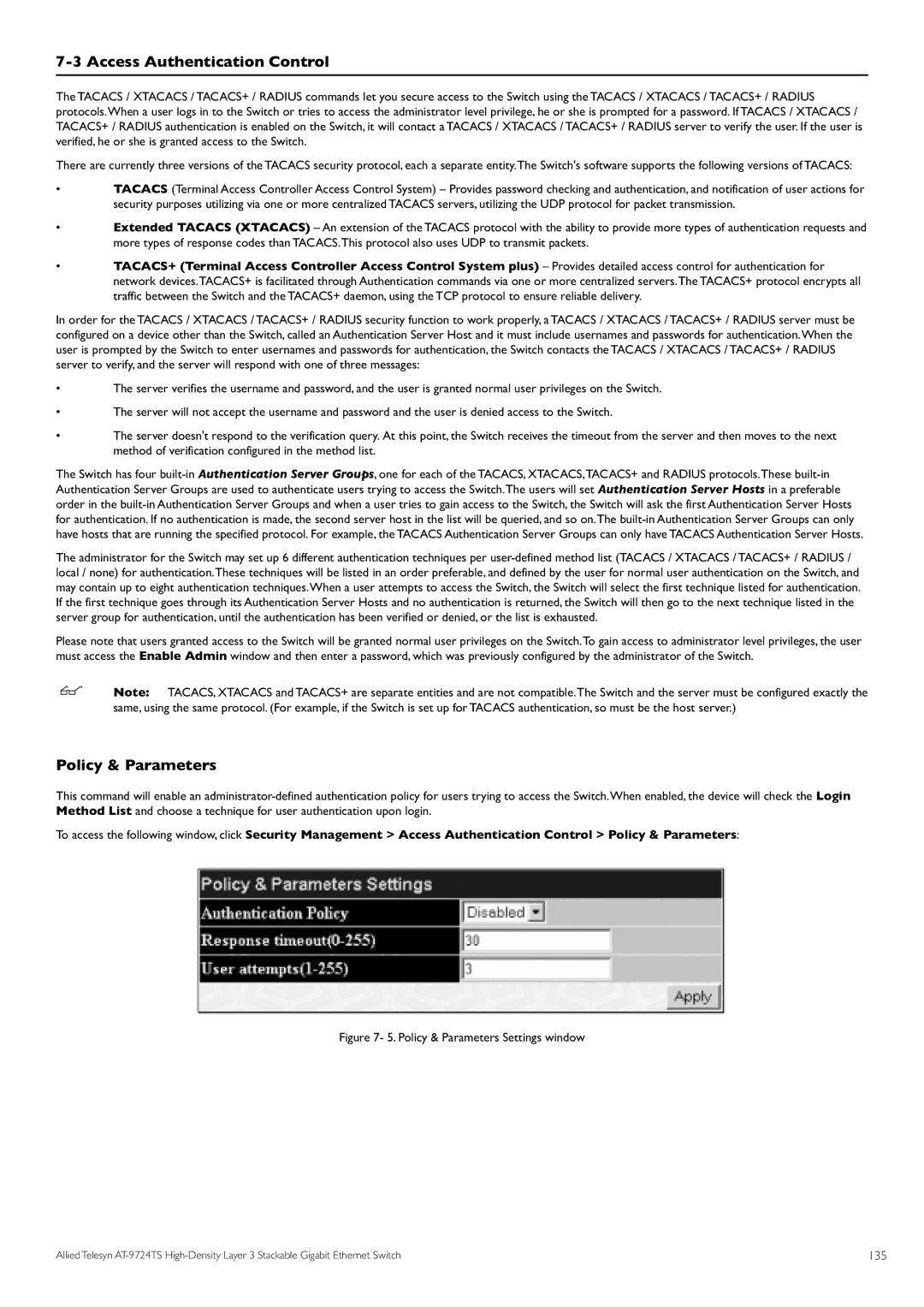
7-3 Access Authentication Control
The TACACS / XTACACS / TACACS+ / RADIUS commands let you secure access to the Switch using the TACACS / XTACACS / TACACS+ / RADIUS protocols.When a user logs in to the Switch or tries to access the administrator level privilege, he or she is prompted for a password. If TACACS / XTACACS / TACACS+ / RADIUS authentication is enabled on the Switch, it will contact a TACACS / XTACACS / TACACS+ / RADIUS server to verify the user. If the user is verified, he or she is granted access to the Switch.
There are currently three versions of the TACACS security protocol, each a separate entity.The Switch's software supports the following versions of TACACS:
•TACACS (Terminal Access Controller Access Control System) – Provides password checking and authentication, and notification of user actions for security purposes utilizing via one or more centralized TACACS servers, utilizing the UDP protocol for packet transmission.
•Extended TACACS (XTACACS) – An extension of the TACACS protocol with the ability to provide more types of authentication requests and more types of response codes than TACACS.This protocol also uses UDP to transmit packets.
•TACACS+ (Terminal Access Controller Access Control System plus) – Provides detailed access control for authentication for network devices.TACACS+ is facilitated through Authentication commands via one or more centralized servers.The TACACS+ protocol encrypts all traffic between the Switch and the TACACS+ daemon, using the TCP protocol to ensure reliable delivery.
In order for the TACACS / XTACACS / TACACS+ / RADIUS security function to work properly, a TACACS / XTACACS / TACACS+ / RADIUS server must be configured on a device other than the Switch, called an Authentication Server Host and it must include usernames and passwords for authentication.When the user is prompted by the Switch to enter usernames and passwords for authentication, the Switch contacts the TACACS / XTACACS / TACACS+ / RADIUS server to verify, and the server will respond with one of three messages:
•The server verifies the username and password, and the user is granted normal user privileges on the Switch.
•The server will not accept the username and password and the user is denied access to the Switch.
•The server doesn't respond to the verification query. At this point, the Switch receives the timeout from the server and then moves to the next method of verification configured in the method list.
The Switch has four
Please note that users granted access to the Switch will be granted normal user privileges on the Switch.To gain access to administrator level privileges, the user must access the Enable Admin window and then enter a password, which was previously configured by the administrator of the Switch.
Note: TACACS, XTACACS and TACACS+ are separate entities and are not compatible.The Switch and the server must be configured exactly the same, using the same protocol. (For example, if the Switch is set up for TACACS authentication, so must be the host server.)
Policy & Parameters
This command will enable an
To access the following window, click Security Management > Access Authentication Control > Policy & Parameters:
Figure 7- 5. Policy & Parameters Settings window
Allied Telesyn | 135 |
